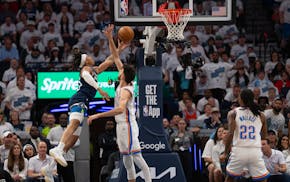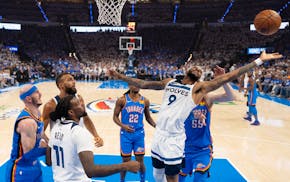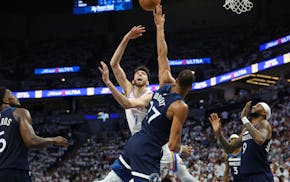The Gophers football team concludes the regular season Friday in a game that accounts for 8% of the schedule but feels tenfold in importance.
Any clash against a border rival carries extra significance, regardless of what has preceded it. Rivalry games are stitched deep into the fabric of college football, and the Gophers-Badgers battle for Paul Bunyan's Axe is the most-played rivalry at the FBS level.
Gaining ownership of the Axe for a calendar year is always a cool reward.
But this meeting is about perception too. The Gophers enter with a 6-5 record. The difference between 7-5 and 6-6 is sizable in terms of how this Gophers season will be viewed by the public.
Nobody is throwing a parade for a 7-5 season. But a .500 record cannot be sold as anything but a major letdown, given the outlook at the beginning of November and the opportunity that was within the Gophers' grasp.
A loss would mean the Gophers finished with a three-game losing streak after once staring at the possibility of a prime Florida bowl game destination. It also would give them a 1-7 record over the past two Novembers.
The Gophers have faced the Badgers with far more at stake in coach P.J. Fleck's tenure. A division title is not on the line, rather a chance to end a roller coaster season with some positivity.
"This is a really, really, really good 6-5 football team that we have," Fleck said this week.
That is an interesting summation that was meant as praise but also suggests the team fell short in maximizing its potential.
The Gophers played only one of the top four teams in the Big Ten — Penn State — meaning they avoided the trio of Ohio State, Oregon and Indiana. On the flip side, they also didn't face two of the league's worst teams, Northwestern and Purdue.
Their schedule was stocked with toss-up games. The Gophers won a few but not enough to elevate the season into the "very good" category.
Whatever outcome Friday, the Gophers' final record will fall in line with various preseason prognostications that didn't view the team's outlook too favorably. Low expectations likely were based on the unknown of turning the offense over to a quarterback transfer from the FCS level. In reality, Max Brosmer was a major revelation who gave the Gophers a credible passing game. Imagine where they would be without him.
Fleck has noted multiple times that his team is 3-4 in one-score games, which includes a one-point loss to No. 4 Penn State this past Saturday.
Like every team, the Gophers can look back at a handful of critical plays that decided outcomes and think about what-might-have-been. That also works the other way in wins that could have been losses.
"The parity when you look at like the fifth team in the Big Ten down to maybe the 14th team, they're all within one or two wins and losses from each other," Fleck said. "It's all really close. This is what we talked about what the new Big Ten is going to look like."
He's correct. College football in general is experiencing a sea change. The confluence of name, image and likeness; the transfer portal; and conference expansion has delivered the kind of parity the sport has so desperately sought.
Look at the Big Ten standings. Ten teams are within three games of each other. The difference between 8-3 and 5-6 is not as dramatic as one might assume because so many programs are relatively similar.
This is how it will be in this new world order. A few elite teams in the top tier, a few bad teams in the bottom tier, and then everyone else in the messy middle.
The divider in the middle — the difference between an average season and a good one — comes down to coin-flip games and whether a team takes advantage of those opportunities. The margin is so slim for most of the league.
The Gophers face another one of those matchups Friday. One game doesn't define a season, but sometimes one game goes a long way in shaping the narrative about a season.

Scoggins: Buckle up Wolves fans, it's going to be a very telling offseason

Scoggins: Finch's next challenge is to unleash the Wolves' youngsters

Scoggins: Timberwolves learn just how far behind they are

Scoggins: Chet Holmgren is in the right place at the right time


